

THIS ISSUE HOW SEATTLEITES SLOWED THEIR STREETS • INTELLIGENT SPEED ASSISTANCE WHY CAN’T MY STREET’S SPEED LIMIT BE CHANGED? • RAISING THE BFC STANDARDS AROUND SLOW ROADS AND STRONG BIKE NETWORKS THE LEAGUE TAKES AN INDEPTH LOOK SAVE LIVES SLOW ROADS AT DESIGNING FOR SAFETY
IN

GIVE ONLINE NOVEMBER 29 GENEROSITY: IT’S JUST LIKE RIDING A BIKE. BIKELEAGUE.ORG/GIVE

Editors: Lauren Jenkins, Communications Director Raven Wells, Communications Coordinator Creative Direction & Design: Halupka Studio � ha-lup-ka.com Intelligent Speed Assistance —The Hot New Tech On Every Vehicle Except The Most Dangerous Ones Intelligent Speed Assistance is one of the most promising technologies to stop speed in its tracks—and we already use it for e-bikes and shared scooters, so why not cars? 10 How Seattleites Slowed Their Streets The Seattle Neighborhood Greenways Coalition has made impressive progress in slowing their streets, not only through “20 is Plenty” speed limits but in redesigning streets as well. 4 2 Viewpoint: Good Roads and Great Networks Built for People Bill Nesper, Executive Director 14 Active People, Healthy NationSM: Sparking Change In Communities Across America 24 Donor Highlight: People Powering A Movement To Drive Less, Bike More 26 Year In Review: Big Wins For the League In 2022 32 Smart Cycling: Teaching the Basics of Bike Infrastructure in Bicycling Education 34 League SAG Wagon IN THIS ISSUE Why Can’t My Street’s Speed Limit Be Changed? What do we want? Lower speeds in our neighborhoods! How do we get it? Read about the two biggest barriers to local governments setting safer speed limits. In most cases, that’s up to the states. 12 Raising The BFC Standards Around Slow Roads And Strong Bike Networks Cohesive, low-stress and highquality bike facilities for all requires communities to step up their engineering game. No longer counting sharrows as bike facilities is just one of the ways the BFC program is rasising its standards to make rides better. 18 SAVE LIVES SLOW ROADS 1
S INCE THE LEAGUE’S FOUNDING

in 1880, the organization has had a focus on improving infrastructure to make cycling safe and accessible. It goes hand in hand with the other essentials we focus our work on like providing education for people biking and driving, and creating more opportunities for people to bike from those most comfortable on a path to those taking the lane.
The legacy of the Good Roads Movement, led by the League at the turn of the 20th century, lives on in our work. Today, like at the beginnings of the movement, better biking infrastructure begins with smooth, paved roads free of surface defects and hazards. Good roads are designed for safe speeds. We join national and international leaders in saying “20 is Plenty” when it comes to designing for the speed at which roads should be driven and setting speed limits for local streets. We know this will move us towards the new standard of Good Roads and Great Networks, where low-stress streets; streets with contextappropriate, high-quality bike facilities like bike lanes, protected bike lanes, and more; and paths and greenways will offer connected bike routes that serve all in a community. When combined with on-bike
GOOD ROADS AND GREAT NETWORKS BUILT FOR PEOPLE
BY BILL NESPER
education for all and the vital programming that builds Bicycle Friendly Communities, everyone will have the opportunity to bike for transportation, good health, and the pure joy and freedom it brings.
In this season of giving thanks, I must call out another great network, our incredible network of people across the country who are making this vision possible. Since its founding, the League has been peoplepowered. League members and supporters are pedaling with us and powering the work you will see showcased in this issue of American Bicyclist. From the emails you send to decision makers to the community meetings you attend, the classes you deliver and the rides you help set up, the encouragement and welcome you give to others connects them with the joy of life by bike. We on the staff are proud to ride with you and to help amplify the voices for proper investment and policies here in Washington and in your community, to support local changemakers through better education and advocacy resources, and to showcase your work at the national level so we might create a bicycle friendly America for everyone, improving lives and strengthening communities through bicycling.
2



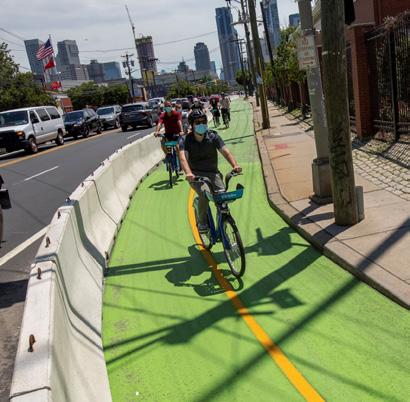



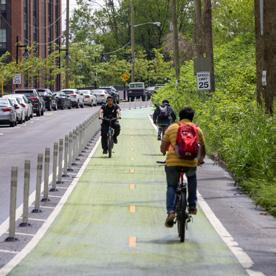
3
ADVOCACY IN ACTION
HOW SEATTLEITES SLOWED THEIR STREETS

 BY LAUREN JENKINS
BY LAUREN JENKINS
4
Photo by Erika Fletcher on Unsplash
SPEED KILLS. SLOWER SPEEDS SAVE LIVES.
When a driver going over 40 miles per hour hits a person walking, that person only has a 55 percent chance of surviving. At 20 miles an hour, the same person walking has a 93 percent chance of surviving the crash.
Those are the facts, and behind the numbers are tens of thousands of individuals whose lives were cut short, families who were forever changed.
Their stories and these preventable tragedies are why advocates for safer streets and better biking are increasingly advocating for a shift in how our communities are designed: to be destinations for everyone and not racetracks for drivers to zip through.
In Seattle, Washington, community advocates in the Seattle Neighborhood Greenways Coalition have made impressive progress in slowing their streets over the last several years, offering change makers and local leaders across the country a model for how to transform their own streets to serve people. The League sat down with a few of the folks who were there at the beginning of the push to lower speed limits and change how roads in Seattle are designed and built to learn about their successes and tips for others hoping to achieve similar wins for safety.
Ask Merlin Rainwater and Brie Gyncild how and when the fight for slower streets started and you’ll learn about the people lost and injured and the memorial rides and walks the advocates led for each of them.
“I think that initiative was critical because it made the issue of speed one of life and death,” Merlin said. “Traffic violence is an invisible scourge. It’s truly taken for granted that people are going to die in traffic and there’s nothing we can do about it.”
The memorial walks and rides, they said, made the issue of traffic safety about more than just the safety of people inside cars. Using the stories of individuals galvanized support for taking big steps like lowering the speed limit throughout the city.
For Brie, lower speed limits were another step towards turning the streets into “places people exist in rather than places people pass through.” When she learned that every city council member was on the record in support of lowering speed limits in Cascade Bicycle Club’s candidate survey, she saw an opportunity to lead a movement for change.
In 2016, a coalition of groups mobilized by Seattle Neighborhood Greenways secured their first major win: the city council and mayor unanimously approved a measure designating all non-arterial streets with speed limits of 20 miles per hour, while arterials unless otherwise posted were set to 25 miles per hour.
Lowering residential speed limits to 20 mph was a big win, but there was and is still much work ahead.
5
“We all know that just changing what the sign on the street says doesn’t actually change behavior,” Brie said. As part of their ongoing advocacy, Seattle Neighborhood Greenways focused on the need to not only put up a new sign, but also to redesign the streets to limit driver speeds.
“It felt like the bigger victory in having arterial speeds set to 25 [mph] was the momentum to redesign those streets for 25 mile an hour speed limits,” Brie said. “That’s what you’re actually trying to do. Ideally, you don’t even need a sign on the street because it’s obvious how slow you should be driving.”
The data agrees. Lowering a speed limit will make a difference in lowering crashes, but it won’t get any city to its Vision Zero goals. According to the Seattle Department of Transportation’s own accounting, crashes went down 20 percent on streets where they only reduced the speed limit.
“You really need to do the harder streets redesign,” said Gordon Padelford, executive director of Seattle Neighborhood Greenways.
Changing the speed limits by sign and by design on Seattle’s arterial roads has taken years and coordination with the state on state-owned highways. That changing the sign on a street is not an immediate silver bullet should not be seen as discouraging, though. Even before the 2016 vote on lowering speed limits, the movement in Seattle was inspiring change.
“I think through the memorial walks and rides, we made a big difference in making traffic safety a serious issue and not just the safety of people inside cars,” Merlin said.
The League hopes the successes in Seattle to lower speed through lower speed limits and street redesign are an inspiration to other local changemakers around the country that it can be done.
“Really believe that it’s possible,” Merlin told us. “A lot of things don’t happen because it seems out of reach, but it’s not, it can be done.”
Together, we can save lives through slower streets.
6
The 85th percentile speed is often described as the highest speed that most people consider prudent and would follow without additional enforcement measures.

LEARN
7
MORE >
85%
DEEP DIVE
WHAT’S THE DEAL WITH THE 85 TH PERCENTILE?
50% 25%
While initially based upon research conducted on rural roads with relatively light traffic, it has since been applied on a much broader scale, including on urban roadways with frequent interactions between pedestrians, cyclists, cars, and other activities of daily life. Although only a few states require traffic planners to use the rule when setting speed limits, in practice most rely on official guidance and manuals that place the 85th percentile rule as the primary method for determining speed limits in the United States.
So what is the 85th percentile? The intent of the rule is to set the speed limit of a road around the 85th percentile in a distribution of driving speeds—meaning that under ideal conditions, 85% of drivers would either drive at or below this speed, and 15% of drivers would drive above this speed. The way this is measured is through a traffic study where the speeds of drivers on a road are measured to determine the actual outlay of this distribution of driving speeds. The speed at which 85% of drivers are either driving at or below is determined, and the closest increment within 5 mph becomes the new posted speed limit.
The 85th percentile speed is often described as the highest speed that most people consider prudent and would follow without additional enforcement measures. The reasoning goes that a standard and predictable speed is safer than one that is arbitrarily slow or fast, which could generate conflict or collisions from vehicles traveling much slower or faster than the main body of traffic. From this perspective, the orderly flow of motor vehicle traffic is prioritized over other considerations such as the safety of pedestrians and bicyclists who are also using the road, but are physically outside of cars. It is also argued that people drive closer to the speed at which they perceive to be prudent based on factors such as road conditions and designs, rather than merely a number posted on a sign.
Although it is true that drivers generally drive at the speed they perceive the road is designed for, this takes place in contexts where it has been recommended practice to actually design roads to a higher speed than the posted limit, in effect guaranteeing that people will instinctually drive over the speed limit.
The 85th percentile rule is one of the most common ways of setting roadway speed limits in the United States, and has been in use since at least the 1950s. 8
A safety study from the National Transportation Safety Board states that “Ideally…statutory speed limits are lower than the design speeds established during the design phase [of the road]”. Furthermore, the practice of continually allowing rulebreakers—those who speed excessively—to set speed limits means basing speed studies primarily on the 85th percentile rule is misguided at best and dangerous at its worst. Over time, speeding from the top 15% of drivers can continually drag speed limits up with each study that is done, even if no design changes take place to the road. Paradoxically, this cycle of continually revising speed limits up based on this upper percentile can create a wide spread of speeds between the compliant

and non-compliant over time, contrary to one of the stated benefits of using the rule. Excessive speed is a major contributor to traffic injuries and fatalities in the United States, which have continually increased in the past decade and are among the highest in the developed world. Although the notion that engineering studies should be done before speed limits is sound, there are alternative measures available which prioritize safety over speed, such as recommendations on “How to Conduct a Safe Speed Study” by the National Association of City Transportation Officials. Notably, the 85th percentile speed is de-emphasized and placed in the context of other figures and methods in this approach.

9
FEDERAL POLICY
INTELLIGENT SPEED ASSISTANCE : THE HOT NEW TECH ON EVERY VEHICLE
 (EXCEPT THE MOST DANGEROUS
ONES)
(EXCEPT THE MOST DANGEROUS
ONES)
BY KEN MCLEOD 10
F YOU’VE RIDDEN AN ELECTRIC BIKE, you are likely familiar with a speed governor. The top speed on electric bikes of different classes is limited by a speed governor set to the maximum velocity defined by the Consumer Product Safety Commission and many state class systems.
If you’ve ridden a shared scooter, you may be familiar with geofenced speed restrictions, like Lime’s Low Speed Zones which allow communities to set top speeds in specific areas.
If you’ve driven a car, you likely haven’t dealt with either the top speed governor or a geofenced speed zone. But, if you visit and drive in the European Union in the near future there’s a very good chance you will get to experience Intelligent Speed Assist. As of 2024, all new vehicles in the European Union must be equipped with Intelligent Speed Assist.
Intelligent Speed Assistance (ISA) is a technology that combines software, geolocation, cameras, and vehicle systems to help drivers follow the speed limit when they are driving. Drivers are assisted in following the speed limit through visual and audio alerts that the speed limit is being exceeded, advisements to increase resistance to depress the accelerator or other haptic feedback, and/or an electronic limiter that prevents speeding.
Speed governors for maximum speeds, as used in all e-bikes, have been around for over 100 years. ISA, which varies speed based on speed limits, is newer with initial research beginning in the 1980s. In 2017, the National Transportation Safety Board recommended that the National Highway Traffic Safety Administration (NHTSA) include ISA in its New Car Assessment Program (NCAP). EuroNCAP initially modeled on the American program has included ISA since 2009, with a significant update to its testing in 2018.
Despite nearly 30% of traffic deaths involving speeding by cars and trucks, it’s electric bikes that federal, state, and local regulations have targeted with speed restrictions, while no laws are in place to slow down cars and trucks by using ISA. In August, New York City made major news with a six-month pilot of ISA on 50 municipal vehicles a welcome sign, but far from action that is likely to have a widespread effect.
American roads are two to five times deadlier than other similarly high-income nations. In 2021, the United States had nearly 43,000 traffic deaths a 16-year high and preliminary figures for 2022 suggest a further increase. In the face of this appalling track record, ISA provides a proven and readily available technology. Studies of ISA in European countries project a 26%50% reduction in fatalities if the technology were enforced by regulation.
So far, there is little indication the US will implement ISA any time soon. In a 2021 Request for Comments, NHTSA asked the public whether it should add ISA to NCAP, but did not provide any timeline for action. The 2022 National Roadway Safety Strategy did not mention ISA and NCAP was not mentioned under the element “Safer Speeds.”
We don’t have to wait for Automated Vehicles to use technology that limits speeds we already use it for e-bikes and shared scooters today. For now, our failure to test, implement, or provide incentives for ISA is just one more reason why the roadways of the United States are uniquely deadly compared to other peer nations. As the League of American Bicyclists works to make sure we have safe streets for all, ISA is one of the most promising technologies that we have today for bringing a large benefit at a low cost.
I
11
STATE POLICY
WHY CAN’T MY STREET’S SPEED LIMIT BE CHANGED?
 BY AUSTIN WU
BY AUSTIN WU
EVERYONE CAN
PICTURE THE ROAD
IN
THEIR AREA:
it’s four to six or more lanes across, it’s a straight line cutting through neighborhoods, its speed limit is set too high, and it rarely has a bike lane or comfortable crosswalk anywhere. It’s a road for cars, not for people. And in many cases, when people go to their city council about modifying these roads, the answer is: “we can’t”. That’s because in many cities and towns, these major thoroughfares are in fact controlled and maintained by the state.
12
Photo: Daniel Case, Wikipedia Creative Commons
The laws in virtually every state have a provision to allow local governments— counties and municipalities—to set their own speed limits, at least in theory. However, in practice, there are two primary barriers to local governments setting safer speed limits: local control of streets, and how speed limits must be set, such as through methods like the 85th percentile rule.
The first issue is whether a local government, such as a city, has control over its streets. Even if the road is contained within the city’s boundaries and is decidedly “urban” in character, such as by having a high number of intersections and volume of traffic, it may still be controlled by the state. In most cases, speed limits for roads under the jurisdiction of the state cannot be altered without approval from the state’s Department of Transportation (DOT) or secretary of transportation, which can be an insurmountable barrier.
A second issue is mandates for how speed limits can be set by local governments, even if they otherwise control the streets. In states such as Maine, New Jersey, Washington, and Tennessee, state laws require that local governments make use of the Manual on Uniform Traffic Control Devices (MUTCD) in their processes for setting speed limits, which has been criticized in the way in which it “biases transportation behavior in dangerous and inequitable ways, prioritizing the speed of cars and the convenience of drivers over other modes and uses”.
Other states mandate the use of the 85th percentile speed rule in setting speed limits. The 85th percentile rule sets the speed limit so that only 15% percent of drivers are going faster than the speed limit, regardless of the context of the street. Until new legislation in California passed just this year, the mandate to use the 85th percentile in setting speed limits frequently resulted in even powerful cities like Los Angeles being forced to raise speed limits against their will.
State legislators have been slow to embrace safer speed limits or allow more local control of speed limits. Progress can be found in Minnesota, where cities may now set speed limits below the statutory limits (30 mph in an urban district and 25 mph in exclusively residential areas) without a traffic study conducted by the state department of transportation. Similarly, local authorities in Washington state are allowed to use processes other than a traffic study to set local speed limits as low as 20 mph. Unfortunately, both of these laws remain constricted by where they can be applied—local roads—and do not address higher-speed roads such as arterials or state highways.
While the League welcomes these state efforts to lower speed limits, we must note that they are limited and do not go as far as international policies that call for 20 mph speed limits for urban roads where people biking, walking, and driving mix.
To most people using a road, the issue of state or local control is unlikely to cross their minds. However, if we want slower, safer, speeds, we need advocates to petition states for more local control and more state DOTs that are partners for safer speeds.
13
BY RAVEN WELLS

BFA IN ACTION SPARKING CHANGE IN COMMUNITIES ACROSS AMERICA
MEET OUR 2022 COMMUNITY SPARK GRANT RECIPIENTS
14
East Side Bike Club does weekly rides every Saturday from Buffalo’s Martin Luther King Jr. Park
Over the past two years, America has seen a boom in biking. This can be seen on your neighborhood streets, your regional trails, and at the community level. To help build on this moment, we launched the League of American Bicyclists’ Community Spark Grant program—each mini-grant serving as a catalyst for empowering your community through bike-related projects—and now 11 hand-picked organizations will each receive $1,500 towards their goal of building thriving Bicycle Friendly Communities. “From border towns and rural communities to urban areas, we are very excited to support the projects and programs proposed by each of the Spark Grant recipients and share our love for grassroots bicycle advocacy efforts in our communities,” said Anna Tang, the League’s Bicycle Friendly America (BFA) program specialist and lead on the Community Spark Grant program. “Our hope is that other communities across the country can look to these recipients and their work as examples of what they can do to make improvements that benefit everyone, but especially those who need safer and easier bicycling the most. These small sparks will ignite a bigger movement towards building a Bicycle Friendly America for everyone.”
Out of 89 applications, the 11 recipients chosen demonstrated a robust ability to catalyze change as well as strengthen and build a Bicycle Friendly Community that is truly for everyone. Many of the projects funded through the grants will serve people facing racial/ethnic and socioeconomic disparities, as well as address gaps in resources to make bicycling a more feasible option for the community. The funding for these grants came from the generous support of General Motors and from the Active People, Healthy NationSM Initiative, an effort by the Centers for Disease Control and Prevention’s Division of Nutrition, Physical Activity, and Obesity to help 27 million Americans become more physically active by 2027.
Whether measured in increased levels of physical activity, higher rates of bike commuting, or just more people choosing to get to everyday destinations by bike, the League is proud to be able to help recipients make a long-lasting impact on their communities through the Community Spark Grant program. We hope to see the benefits of these projects break down barriers within communities and transcend generations.

15
Class is in session! Girls In Gear teaches life skills through bike skills
ALTADENA TOWN COUNCIL ALTADENA, CA
Altadena Parkways Multi-benefit Project
Single occupancy vehicles fill the streets of Altadena while a lack of connected walkways and bicycle infrastructure, plus reduced transit service, have resulted in higher rates of pedestrian and bicycle-related traffic collisions and often below-average health scores. A community-led demonstration project will build awareness about the need for safe routes to parks and schools, traffic calming, and green street multi-use path solutions.
BICYCLE OVEN COMPANY
CHARLOTTE, NC
Seniors: Cycle That Pain Away
Bicycle Oven Company plans to initiate discussions, as well as sponsor webinars and lunch and learn events, with physicians in the area about promoting the health benefit of bicycling as a low-impact sport to their patients. “Ultimately, we will offer Smart Cycling courses for seniors in consultation with their physicians. With this project, we hope that ridership over the age of 50 will increase in Charlotte neighborhoods,” they wrote in their application.
BRIGHT COALITION BOWLING GREEN, KY
Make BG’s Biking BRIGHTer
The BRIGHT Coalition is supporting BikeWalk BG in a collaborative effort to promote bicycle and pedestrian safety and education in an area with a large number of non-English speaking families and residents who face issues like physical inactivity at a disproportionate rate. The project includes supplying low-income families with bike safety equipment, including enhanced visibility bicycle and shoe lights, reflective gear, and helmets.
CITY OF LANSING • LANSING, MI
Wheel Change: Lansing Bike Repair Station
With the installation of a fully-equipped bike repair station, the City of Lansing’s Public Service Department aims to increase the number of bicyclists who utilize the Lansing River Trail and enhance multi-modal transit options for the significant population of refugees and long-time Lansing residents who garden at Webster Farms.
EAST SIDE BIKE CLUB
BUFFALO, NY
Amplifying
and Enhancing the East Side Bike Club Community Workshop and E-Bike Library
There are very few facilities for those who commute by bike in Buffalo’s East Side despite the fact that 1 in 3 households in the area do not own a personal vehicle. This project involves implementing a bicycle and pedestrian refuge for those passing by or stopping at the club’s shop and the installation of bicycle racks and benches on the street where the shop is located, which is at the heart of Buffalo’s densest Black commercial district.
FREE BIKES 4 KIDZ MORGANTOWN, WV
Free Bikes 4 Kidz Morgantown
Free Bikes 4 Kidz (FB4K) Morgantown needs a large capacity bike rack to be able to more efficiently collect and distribute donated bikes to low-income families. “We have 35 bikes coming soon from Chicago. Long-term, we hope to keep on hand a fleet of ready-togive-away bikes, in a range of sizes, so kids can keep bikes instead of borrowing them. We feel that kids should have the opportunity to bond with their bicycles as we have,” they wrote in their application.
GIRLS IN GEAR • NEWARK, NJ Girls in Gear Newark
Girls in Gear will use the grant to provide bikes and helmets for two teams of 15 girls in Newark with an eight-week season of Girls in Gear this fall. In addition, first aid and CPR certification as well as comprehensive safety training will be administered to volunteer coaches who will lead the curriculum. “By providing bikes, and helmets to any rider who needs one, we are breaking down the barriers to entry for cycling, which can frequently seem daunting for a working-class family,” stated Girls in Gear in their application.
“Our hope is that other communities across the country can look to these recipients and their work as examples of what they can do to make improvements that benefit everyone...”
16
LAREDO MAIN STREET
LAREDO, TX RECYCLE
Laredo Main Street hosts the Laredo Main Street Farmers Market, which includes seasonal produce and locally made goods, as well as entertainment. As Laredo is a food desert, the event is essential to the residents of Laredo, a predominantly Hispanic population. RECYCLE is a project that will give the community an opportunity to develop the knowledge and skills associated with bicycle maintenance at Laredo Main Street’s Farmers Market.
THRIVE ALLEN COUNTY IOLA, KS
Allen Community College Fixit Service Station

Thrive Allen County, a rural health advocacy organization, runs a free bike share program, an earn-a-bike program, and bike repair classes to make bicycling in Allen County more convenient. Allen County has a poverty rate of 14.5% and 20% of residents do not have access to reliable transportation. This project will install a fix-it station for a rural community that relies on bicycles as a main source of transportation.
TULSA GLOBAL DISTRICT TULSA, OK Global District Open Streets

Tulsa Global District is a 501(c)3 organization committed to the commercial revitalization of the 21st St & S Garnett Road commercial corridor, which their application described as “the most diverse community in Tulsa, with 54% of residents identifying as Black, Indigenous and People of Color including significant Latinx and Asian communities represented.” This project will host an open streets event in the Global District, as an implementation effort of the NACTO Streets for Kids Design Workshop.
THE UNIVERSITY
OF TEXAS AT ARLINGTON
•
ARLINGTON, TX
UTA Bike Library (lights & locks)
The University of Texas at Arlington (UTA) is a Bronze-level Bicycle Friendly University. The UTA Bike Library is an emerging campus partnership that circulates bicycles checked out from the campus libraries on a semesterly basis at no cost to members of the UTA community. This grant will support the purchase of lights and locks for the UTA Bike Library.

UTA Bike Library receiving a donation of used bikes

Get more indepth profiles on our recipients FIND OUT MORE
Thrive Allen County riding with the Humboldt community
17
RAISING THE BFC STANDARDS AROUND SLOW ROADS & STRONG BIKE NETWORKS
BY AMELIA NEPTUNE
IN SEPTEMBER, THE LEAGUE UNVEILED a newly updated 2022 Bicycle Friendly Community (BFC) application. Thanks to the input of over 200 local practitioners and advocates who participated in interviews, listening sessions, surveys, and focus groups over the past year, we were able to make some big changes to the BFC application to reflect higher standards for what it means to be a Bicycle Friendly Community for Everyone.
These updates include a new ‘Equity & Accessibility’ section of the application to reflect the new 5th E of the BFC Program’s “5 E” criteria, as well as new and updated questions across all 5 E’s. If you’d like to dive deeper into all of the recent BFC updates, you can learn more on our blog, but here are just some of the ‘Engineering’ updates we are most excited about that we think League members will be excited about too.

BFA IN ACTION
YOU CAN LEARN MORE ON OUR BLOG 18

19
FROM PIECEMEAL BIKE LANES TO COHESIVE BIKE NETWORKS

Historically, the BFC application asked communities to report miles of on- and offstreet bike facilities, but these piecemeal numbers missed many aspects of what makes a good bike network. There was no consideration of the distribution, quality, or connectivity of these facilities, beyond basic standards like minimum widths. We now require applicants to provide a map of their bike network to show the layout of their bike facilities, and communities will be evaluated on how well-connected and how equitably-distributed their bike network is.
We also ask applicants about any assessments they’ve done on the bike network, such as evaluating the quality or completeness, quantifying access to destinations or equity impacts, or analyzing safety data to identify problematic high-crash areas. We know that many communities are not yet doing these types of analyses, but that is precisely the point: the BFC program has raised its standards because we want communities to raise their standards, to make your ride better.
Stay tuned for our first BFC awards announcement and new report cards reflecting these updates in December. If your community is up for renewal or would like to participate in the BFC program for the first time, our 2023 submission deadlines are February 15 and August 30. Find the full BFC application and learn more at bikeleague.org/community.
 Sharrow outside door zone in Richmond, Virginia
Sharrow outside door zone in Richmond, Virginia
20
LOW-STRESS, HIGH-QUALITY BIKE FACILITIES FOR ALL

Behind the scenes, the BFC application has always given more points to lowerstress facilities facilities that riders of all ages and skill levels are more likely to feel comfortable riding on, such as protected bike lanes or paved off-street pathways, as opposed to paint-only bike lanes or onstreet shared lane markings (“sharrows”).
However, the old BFC application and report card presented all bike facilities as equal, giving the false impression that they were all weighed equally in our evaluation process. The updated BFC application gives immediate feedback to communities on which facilities count as “low-stress” and spotlights what percentage of a community’s bikeway network meets the criteria for “low-stress”. To reflect the League’s new priorities around slowing down roads and car traffic, the revised application also helps applicants see how appropriate their road network’s speed limits are, which will also be emphasized in future BFC report cards.
One of the biggest shifts in the BFC bike network questions is that sharrows are no longer counted as bike facilities Applicants are still asked to report how many miles of sharrows exist in their community, but only under the category of “other features and markings” rather than under “bike facilities”. While sharrows have their place in helping to reinforce the legitimacy of bicycle traffic on the street, there is consensus in national bikeway design guidance and standards that shared lane markings are not bike facilities, and the BFC application and award criteria will now reflect this. For some BFCs with many miles of sharrows, this means their total bike network mileage will appear to decrease on their next BFC renewal, but again these higher standards are precisely the point: our goal is to help every community create a cohesive, connected, low-stress bike network that feels welcoming and safe to all kinds of riders.
Protected bike lane from University of Washington’s Bicycle Friendly University application
21







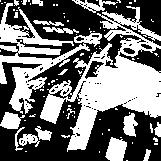
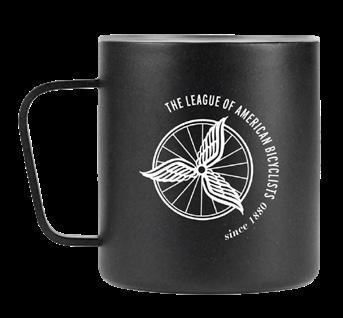
WE KNOW BIKE PARKING. Inside and out.® Download our free bike parking guides at www.dero.com GET YOUR HOLIDAY SHOPPING DONE IN OUR MERCH STORE SHOP.BIKELEAGUE.ORG
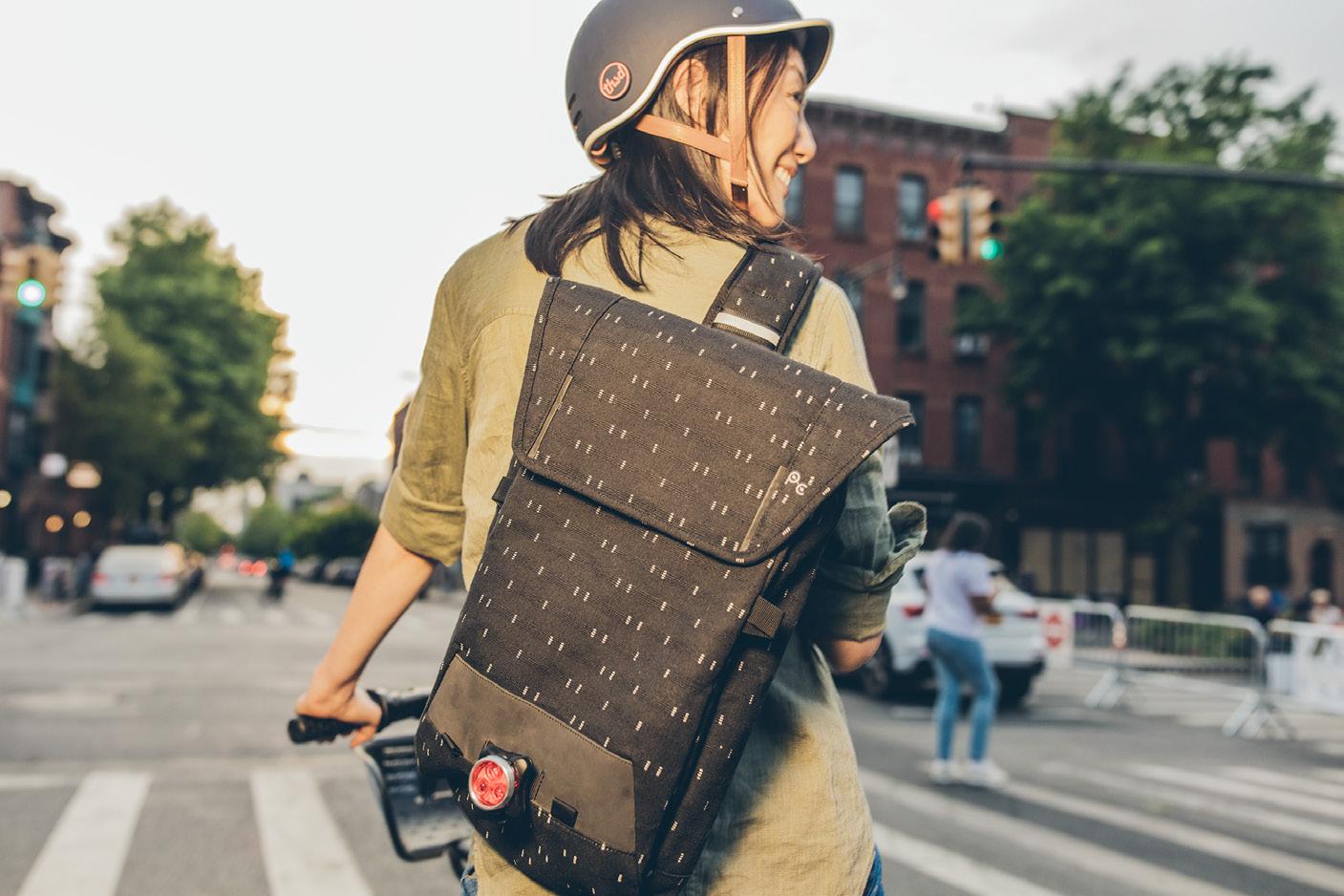
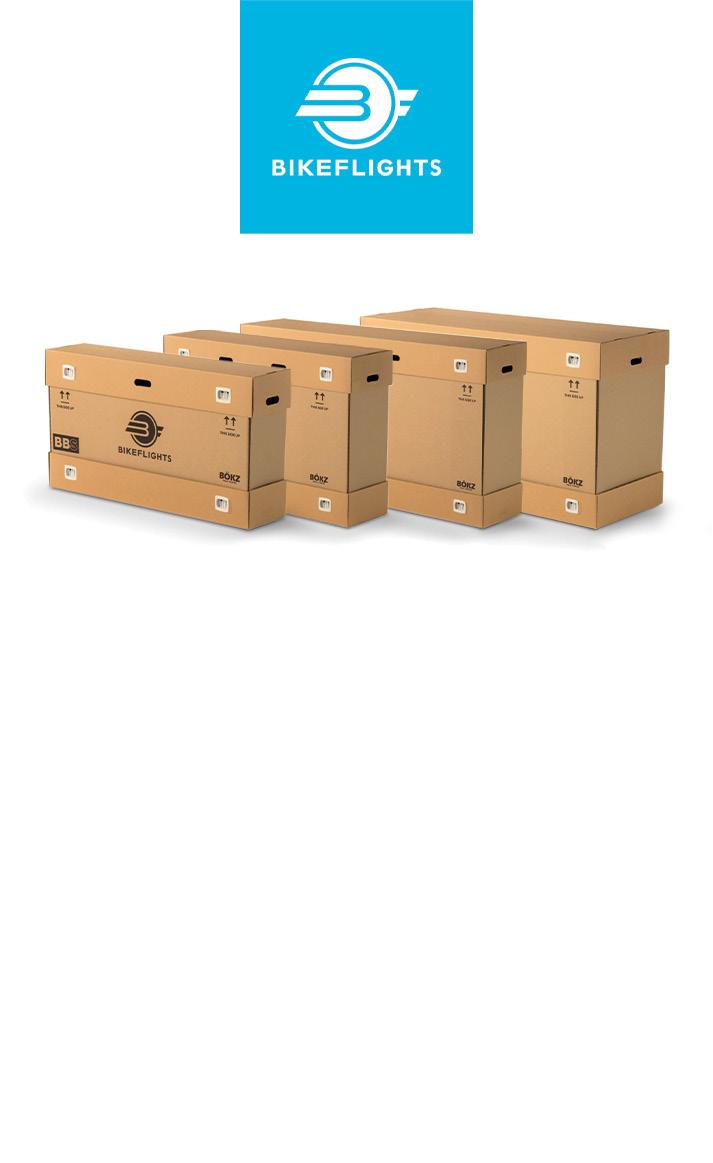

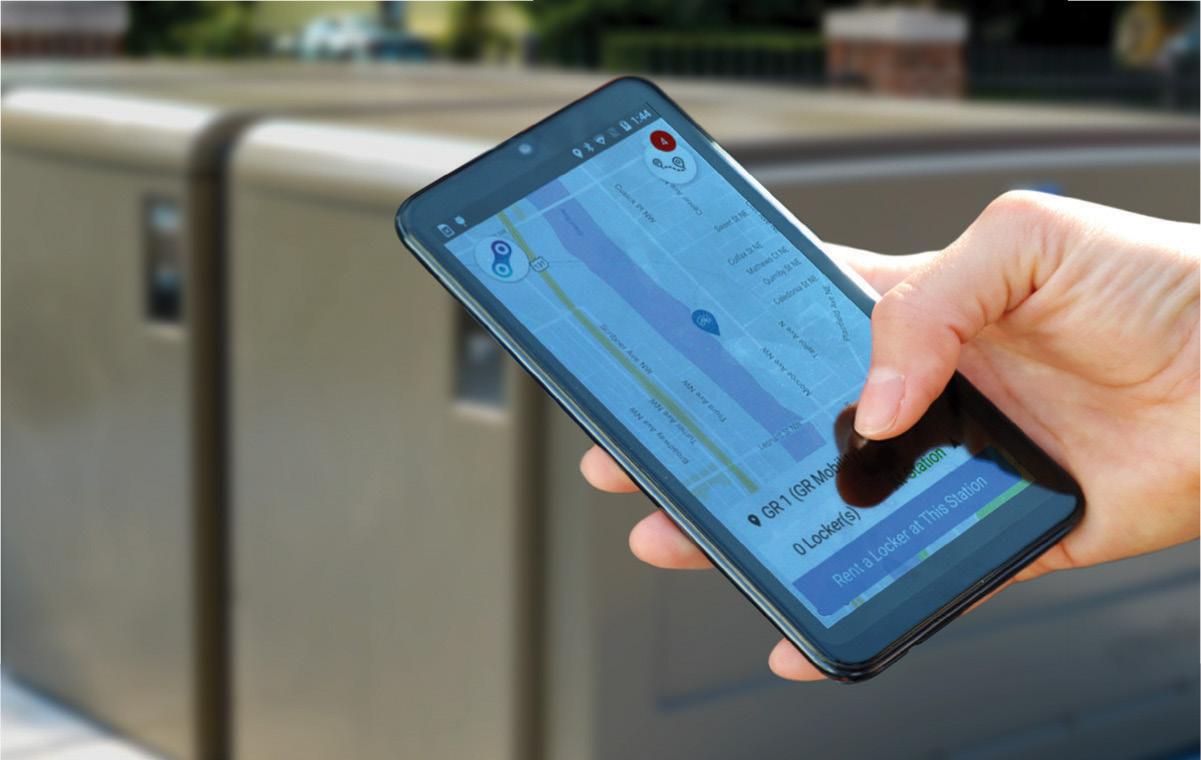
WWW.POCAMPO.COM Now o ering Corporate Gifts Stylish & Reflective Bike Bags Stylish & Reflective Bike Bags ROLL UP FOR THE MOST EPIC, CAR-FREE RIDE OF THE YEAR! REGISTRATION OPENS 1/11/23 >> BIKE.NYC/TOUR cyclesafe.com SIMPLE. STRONG. SECURE. AND NOW, SMART AND SEAMLESS. CycleSafe’s Bluetooth accessible bike lockers allow users to find, reserve, rent, and pay for bike locker usage on demand using their smartphones.
PEOPLE POWERING A MOVEMENT TO DRIVE LESS, BIKE MORE
BY LAUREN JENKINS
Drop those car keys! We’re nearing 2 million miles biked for everyday trips in our second annual “Drive Less, Bike More” campaign thanks to the many Americans who have discovered their next trip to the store, coffee shop, or elsewhere is possible by bike.
We couldn’t have launched this transformative campaign without the generous support of Mark Makulinski and the Makulinski Family Foundation. It’s donors like Mark, with big gifts and with small gifts and everywhere in between, who power our movement to make biking safer, easier, and more convenient for more people. What motivates donors like Mark to invest in big changes in the way Americans think about bikes?
“I started biking just for transportation— to ball practice or school,” Mark said about his early experiences with biking. “I had four siblings and my parents didn’t have time to take me around, so I had to make my own transportation.”
Even today, bicycling is a main means of transportation for Mark. A big bonus is that it doubles as a form of exercise, too, after an injury put an end to his recreational running.

“Today, I’m going to ride my bicycle to Walmart to pick up a few items, meet my wife for lunch and then ride back. I’ll probably end up with 15 miles—no biggie.” But he also told us, “I believe you don’t have to give up a car to ride a bicycle or give up bicycling to drive a car. I still drive my car when needed and ride my bike. You can assimilate both into your life.”
That’s exactly the kind of thinking the League is hoping to inspire with the “Drive Less, Bike More” campaign. You don’t have to turn your life upside-down and sell your car to make an impact. Just converting one or two short car trips per week to bike trips does the trick, because short trips make a big change!
DONOR HIGHLIGHT
24
The thinking has already changed over the last few years. According to Mark, “When I first started biking climate change wasn’t talked about. Now, everyone knows putting more carbon into the air is not good, to understate it. They say the least efficient car trips you can take are short trips like a drive to a local store. So you can do your part to mitigate carbon emissions and save the environment by simply reducing the number of short trips you take by car and instead replacing them with a bike ride.”
While we often focus on the impact of these small changes to the world at large, we also can’t forget how taking more short trips by bike can impact your neighborhood. “The one thing I have always said is that bicycling unites the community. It really does build up a community spirit,” Mark said. “I’ve met people in my neighborhood while riding my bike from
just saying hi while waiting at a stop sign or traffic light. When you’re inside a car you don’t have as much opportunity for interaction.”
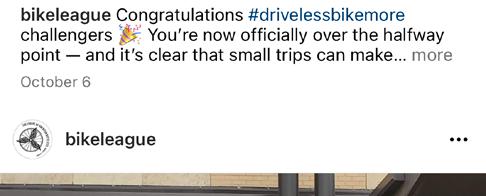
We’re so grateful for people like Mark who are investing their resources into our movement to build a Bicycle Friendly America for everyone. Through bicycling, we can make our communities stronger, safer, and friendlier.




This holiday season, be a part of this change and make your own donation to the league: bikeleague.org/give


FIND OUT MORE 25
BY LEAGUE STAFF
What a year! With the generous backing of our members and supporters, we’ve had a stellar 2022, achieving major wins for the bike movement. With your support, we can’t wait to see what we accomplish together next year.

YEAR IN REVIEW
THANK YOU! 2022 2023 LOOKING BACK AT EMERGING
26
STRONGER IN
ADVOCATED
$3 BILLION INFRASTRUCTURE PROGRAM
Secured a $3 billion infrastructure program focused on improving bicycling and walking access and safety as well as reconnecting communities divided by past inequitable transportation projects. The program includes $1 billion set aside for projects in low-income and underserved communities.
INBOTHHOUSE & SENATEBUDGET
Successfully Advocated for funding for bicycling and walking complete networks in both the House and Senate Budget process.
This was a National Bike Summit lobby day priority!
ACCESS ON BRIDGES
Successfully advocated for the U.S. Department of Transportation to require biking and walking access on bridge repair projects and to incentivize access on new bridge grants.
Influenced a Department of Transportation program to speed up the completion of biking and walking projects near transit.
NATIONAL
ROADWAY
SAFETY STRATEGY
Worked with the Department of Transportation to promote a higher priority on bicycle, pedestrian and vulnerable road user safety through multiple programs, including the first-ever National Roadway Safety Strategy.

FEDERAL ADVOCACY
FO R FUNDING
SUCCESSFULLY
27
BIKING AND WALKING PROJECTS NEAR TRANSIT
BENCHMARKING PROJECT ON BIKING AND WALKING
Comprehensively updated data.bikeleague.org this interactive tool continues the Benchmarking Project on Biking and Walking created in 2007. We also published 126 fact sheets to provide useful snapshots of data for advocates, policymakers, and agency staff.
BENCHMARKING BIKE NETWORKS REPORT

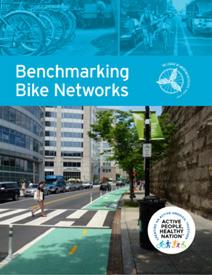
Published the Benchmarking Bike Networks report, which was featured in an exclusive article by Citylab and supported with a webinar.
Advocated for improvements to NHTSA’s New Car Assessment Program (NCAP) resulting in 2,000+ comments demanding that NHTSA add
BICYCLIST-AUTOMATIC EMERGENCY BRAKING
testing as soon as possible.
POLICY CHANGES
Collaborated with the Transportation Equity Caucus on enforcement-related policy changes, and initiated a meeting with high-level Biden administration officials from the White House, FHWA, NHTSA, and the Department of Justice on related issues.
BICYCLE FRIENDLY STATE RANKING
Published a new Bicycle Friendly State ranking, and named Massachusetts the #1 Bicycle Friendly State. This was the first time that a state other than Washington was ranked #1 and reflects both the great work of Massachusetts and our evolving strategy to make the ranking more competitive and meaningful for more states.
POLICY DEVELOPMENT
& WALKING IN THE UNITED STATES HOME ABOUT TOPICS EXPLORE DATA DOWNLOAD REPORTS CONTACT
BICYCLING
#1 28
MASSACHUSETTS
bicyclistasafepassinglawwithaminimumdistanceof3feettoaddress safety.Overthelasttwodecadesmoststateshaveadopted statesasafepassinglawtoprotectpeoplebiking.Massachusettsisoneof11 thathasnot. TheMunicipalModernizationActof2016allowsmunicipalitiestoestablish regulatoryspeedlimitsonlocally-ownedroadwayslowerthanthe Safetystatutory/defaultspeedlimitincertaincontexts.Theseinclude20mph businessZones,20mphSchoolZones,and25mphzonesinthicklysettled districts.EstablishingspecialspeedregulationsonMassDOTaownedroadwaysrequiresMassDOTapproval.SupportingSaferSpeedsis leaderkeypillaroftheSafeSystemApproachandMassachusettsshouldbea Massachusettsinestablishinganddesigningsaferspeedroads. implementationisverywellpositionedtoimprovebicyclingthrough oftheBipartisanInfrastructureLaw,withformer MassDOTsecretaryandCEOStephaniePollackasFHWADeputy stateAdministratorandstrong,recent,bicycleandpedestrianplans.The

SEETHEBICYCLEFRIENDLYSTATEDATABASEMAP: BIKELEAGUE.ORG/BFA/AWARDS
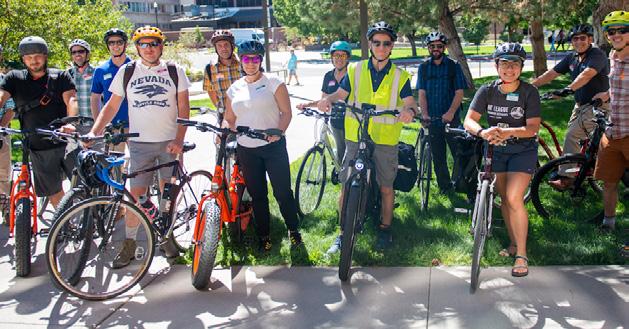
BFA
& ACCESSIBILITY EXPANDED REACH BICYCLE FRIENDLY STATE REPORT CARD Updated the Bicycle Friendly Community Application and 5 E criteria to include Equity & Accessibility. See page 18 to learn more! Hosted 5 Bicycle Friendly COMMUNITY WORKSHOPS
bikeleague.org/ blog to learn more!
the League of American Bicyclists’ Community Spark Grant program and awarded 11 COMMUNITY SPARK GRANTS See page 16 to learn more! 190 BFA APPLICATIONS
businesses,
isinapositiontoleadonbicyclingissuesandwehopethatitOntakesadvantage. multi-stateanegativenote,theTransportationClimateInitiative,ainitiativetocutcarbonemissionsinthetransportation sectorwhichMassachusettsled,isonhold.TheLeaguehopes theMassachusettscontinuestoleadonreducingcarbonemissionsin transportationsector. Rank Ridership 0.9%ofcommutersbikingtowork 5/50 Safety 3.6fatalities per10Kbikecommuters 9/50 Spending $4.04percapitaFHWA spendingonbikingandwalking 14/50 MASSACHUSETTS REPORTCARD Progress? CompleteStreetsLaw/Policy Yes SafePassingLaw(3ft+) No Statewidebikeplanlast10years Yes 2%ormorefederalfundsonbike/ped Yes BicycleSafetyEmphasisArea Yes REPORT GUIDE overTheBicycleFriendlyStaterankingisbasedonacomprehensivesurvey—with 100datapoints—completedbystatedepartmentsoftransportationandstatebicyclingadvocates.Formoreinformation,visitbikeleague.org/statescontactKenMcLeodat(202)822-1333orken@bikeleague.org.
EQUITY
Visit
Launched
Received and evaluated 190 BFA applications from communities,
and universities. Visit bikeleague.org/bfa to see the results! Translated the Bicycle Friendly Community public survey into Spanish and greatly expanded how the survey is distributed to reach as many current and potential cyclists as possible. Visit bikeleague.org/blog to learn more! ofBasedontheinformationweobtainedforMassachusetts,theLeague safety,AmericanBicyclistsbelievesthefollowingactionswillimprovethe comfort,andaccessibilityofbicyclinginMassachusetts. termsMassachusettshadoneofthemostrobustresponsestoCOVID-19in Sharedofcreatingspaceforpeople.TheBaker-PolitoAdministration’s StreetsandSpacesGrantProgramawarded$33milliondollars Thisto183municipalitiesandfourtransitagenciesforatotalof310projects. engagedresponseiscommendableandthelessonslearnedandpeople throughtheprogramshouldinformcontinuedeffortstocreateAdoptsafer,slower,spacesforpeoplebikingandwalking.
Infrastructure&Funding A stateConsiderstheuseoffederaltransportationfunding, infrastructuretransportationfunding,andtheexistenceofbicycle inthestate. Education&Encouragement A Considersbicyclemodeshare,advocacy,stategoalsto increasebicycling,andwhetherthestatesponsorsa conferenceonbicycling. TrafficLaws&Practices D forConsiderstrafficlawsrelatedtobicyclistsafetyandpractices trafficautomatedenforcementandpreventingracialdisparitiesin lawenforcement. Policies&Programs A ConsidersCompleteStreetspoliciesandprogrammatic supportforimplementingbicyclingimprovements, includingstaffingandintegratingpublichealth. Evaluation&Planning AbicycleConsidersstatebicycleplans,safetyoutcomes,guidanceon facilities,datacollectiononbicyclingandwalking,andpublicengagementofbicyclists. F C B REGIONALRANK(OFEASTERN 11) #1 NATIONAL(OFRANK 50) #1 STATEADVOCACYGROUP: MASSBIKE 12% PERCENTOFSTATEINBFCSILVER+ WE’REBUILDINGABICYCLEAMERICAFRIENDLY FOREVERYONE WE’RE BUILDING BICYCLE FRIENDLY AMERICA FOR EVERYONE BIKELEAGUE.ORG FederalDataonBiking BicycleFriendlyActions Released updated Bicycle Friendly State Rankings, including report cards for each state providing guidance for improvement. Visit bikeleague.org/states to learn more! WE’RE BUILDING A BICYCLE FRIENDLY AMERICA FOR EVERYONE 29
Released 13 New Smart Cycling Videos in English and Spanish!

Seven are specific to motorists on how to share the road with bicyclists, answering questions like why a bicyclist might ride in the middle road and how to avoid common crashes

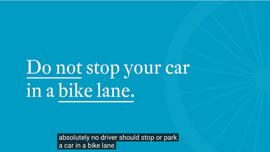

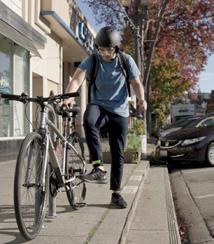
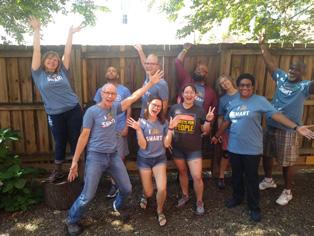
Six are safe cycling education for beginning and experienced cyclists, covering bike riding basics from lane positioning to parking your bike
All videos are available in English and Spanish and are posted on the League’s website and YouTube channel!
Held a total of 38
seminars in 2022, a 41% increase over 2021!
Projected to certify 342 new LCIs!— a 68% increase from 2021
EDUCATION 13 7 6 84 38 342
ALL
LCI
38
20 with
with direct support from QBP
direct support from the Be Good Foundation
NEW SMART CYCLING VIDEOS
ONLINE BICYCLE FRIENDLY DRIVER TRAINING Launch of Awarded 84 BIPOC Scholarships to our LCI Seminars in 2021-2022 BIPOC SCHOLARSHIPS
30
ENGLISH & en español
MEDIA MENTIONS 4,000
The League was mentioned in The Washington Post, The New York Times, The New Yorker, NPR, Today, StreetsBlog USA, Bicycle Retailer and Forbes
More than 4,000 joined the over 300,000 people already following our social media updates and email newsletters
1 MILLION MILES
Our Campaign to “Drive Less, Bike More” launched for the second time and has reached over 1 million miles of trips made by bike
NEW LEAGUE WEBSITE
Construction of a new League website that will make it easier to navigate the League’s resources and connect the bike advocacy community is underway

PLANNED GIVING
SUPPORT THE LEAGUE THROUGH
Many of our members express their commitment to our longterm sustainability by naming the League in their wills or trusts. Reach out today to learn how your estate can help further the League’s mission—and build a prosperous future for American bicycling.
Contact Kevin Dekkinga Director of Membership and Development Kevin@bikeleague.org | 202.621.5449
COMMUNICATIONS
31
THE VALUE OF PROTECTED BIKE LANE EDUCATION
BY KURT KAMINER, DR. MICKEY WITTE UNIVERSITY OF MIAMI BIKESAFE PROGRAM
There is an unspoken vehicular cycling bias that comes with being a bicycle rider in the United States. We are told to believe that the only assurance of safety is to “claim the lane” and ride as if one were driving a car, lest anyone try to marginalize the bicyclist’s right to the road.
But this mindset fails to consider that sharing the road on our dangerous-bydesign streets is an impossible sell outside of the most fearless of us in the cycling community, and fails to reflect the needs of the many who would ride if given a safe place to do so.
Thankfully, the US has come far enough that protected bike lanes and protected intersections are no longer foreign concepts, nor are their safety benefits debatable. Thanks to a 13-year study from the University of Colorado Denver and the University of New Mexico, we now know that the addition of protected facilities to a city’s road network is estimated to reduce
bicycle crashes by 50% and deaths by 44%, making protected bike lanes the single most effective intervention known for rider safety—even more than helmets. Though a helmet protects a rider during a crash, a protected bike lane prevents the crash from happening in the first place.
Even though protected facilities are already making a huge, positive impact on bikeability around the world, bicycle safety education in the US—even for youths—still relies primarily on the tenets of vehicular cycling. Most educational materials do not mention the existence of protected bike lanes (nor do they discuss places to ride at all); instead they emphasize helmets and high-viz. So prevalent is this approach that it has become the target of satire, with cycling advocates on social media frequently admonishing organizations for upholding the narrative of rider selfresponsibility—especially when the role of some of those organizations is to build safe streets in the first place.
SMART CYCLING
32
Some may call them Traffic Gardens, others call them Safety Towns, but whatever name you use, we can all agree that youth-scaled bike riding environments are places for fun and creative learning!
We now know that the addition of protected facilities to a city’s road network is estimated to reduce bicycle crashes by 50% and deaths by 44%.
While lampooning the failures of education often helps us vent our frustrations, it also illuminates an untapped opportunity to merge education with infrastructure. After all, if safety is the point of cycling education, then it is remiss not to discuss the type of bike lanes that afford the greatest level of safety.
As such, we need more bicycle educational programs to escape the traditional vehicular cycling mindset and explain why protected bike lanes are our most important safety tool. We need bike rodeos to thoughtfully integrate protected bike lanes to introduce (and reinforce) them to communities that want safe streets.
(*Author’s note: These new approaches to bicycle safety education are being championed as part of the University of Miami BikeSafe program at ibikesafe.org).
To wit, protected bike lanes are not only safer because the data says so, they actually appear safer, and with that comes emotional appeal; absolutely essential for effective advocacy. Show parents a curb separator topped with a row of pretty planters and you’ll find it easy to convince them that cycling can be a safe family activity—an argument that vehicular cycling will never win.
When people actually see protected bike lanes, it becomes apparent that they deserve support—the same public support that is required to gain the political will to get them built.
Approach education with a more idealistic view of the future and you’ll inspire the future.
Editor's Note: The League welcomes a wide variety of perspectives on bicycling education within our Smart Cycling program. Whether people are more comfortable biking on a multi-use path or taking the lane, the League works to celebrate and preserve the freedom cycling brings to our members everywhere.

33
the road on our dangerous-by-design streets is an impossible sell outside of the most fearless of us in the cycling community, and fails to reflect the needs of the many who would ride if given a safe place to do so.”

Minneapolis, MN Plymouth barrier protected bike lane
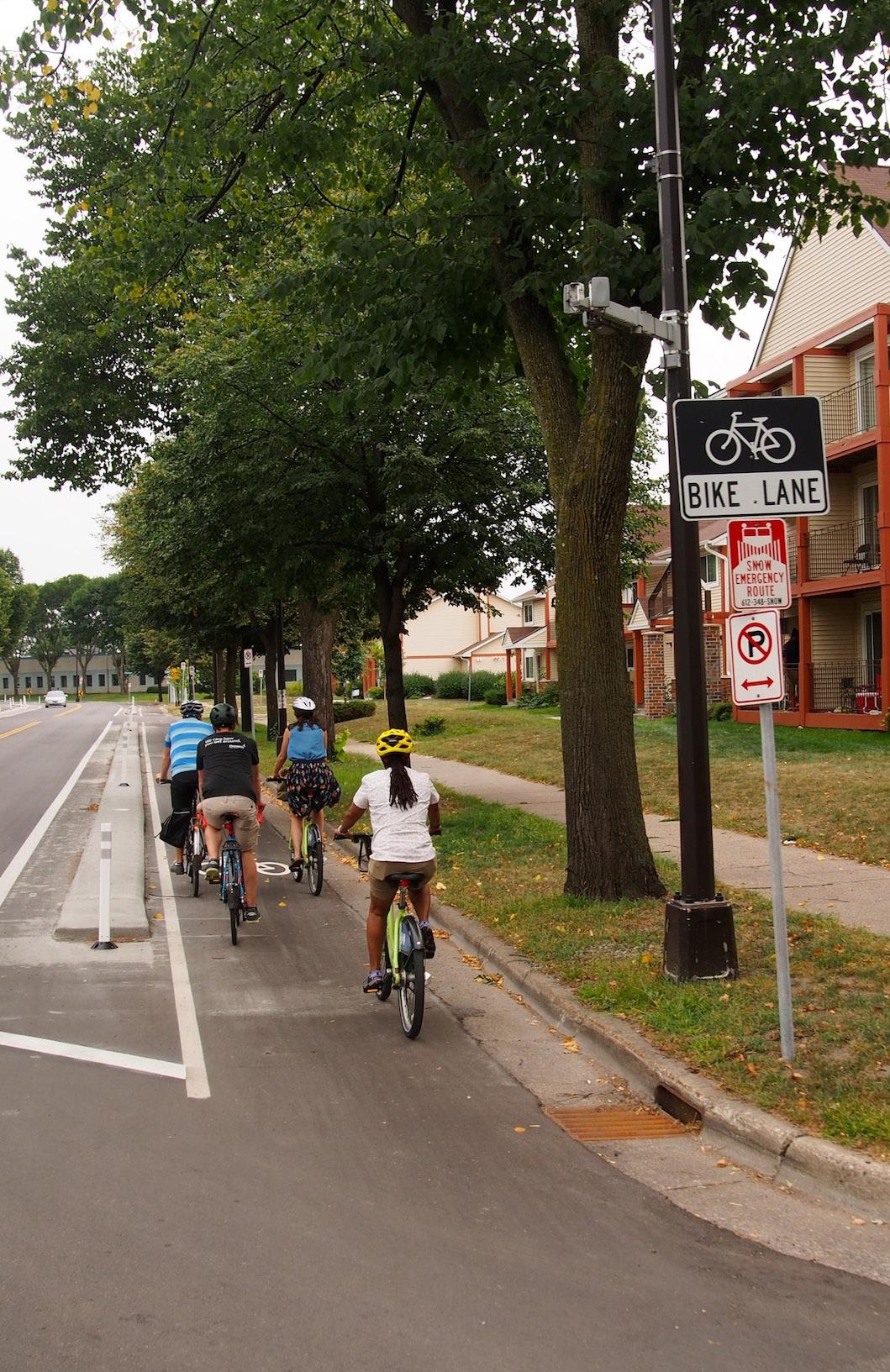
FIND OUT MORE 34
“...sharing
ACCESS THE TRAINING COURSE
learn.bikeleague.org
learn.bikeleague.org
BICYCLE FRIENDLY DRIVER TEST ONLINE
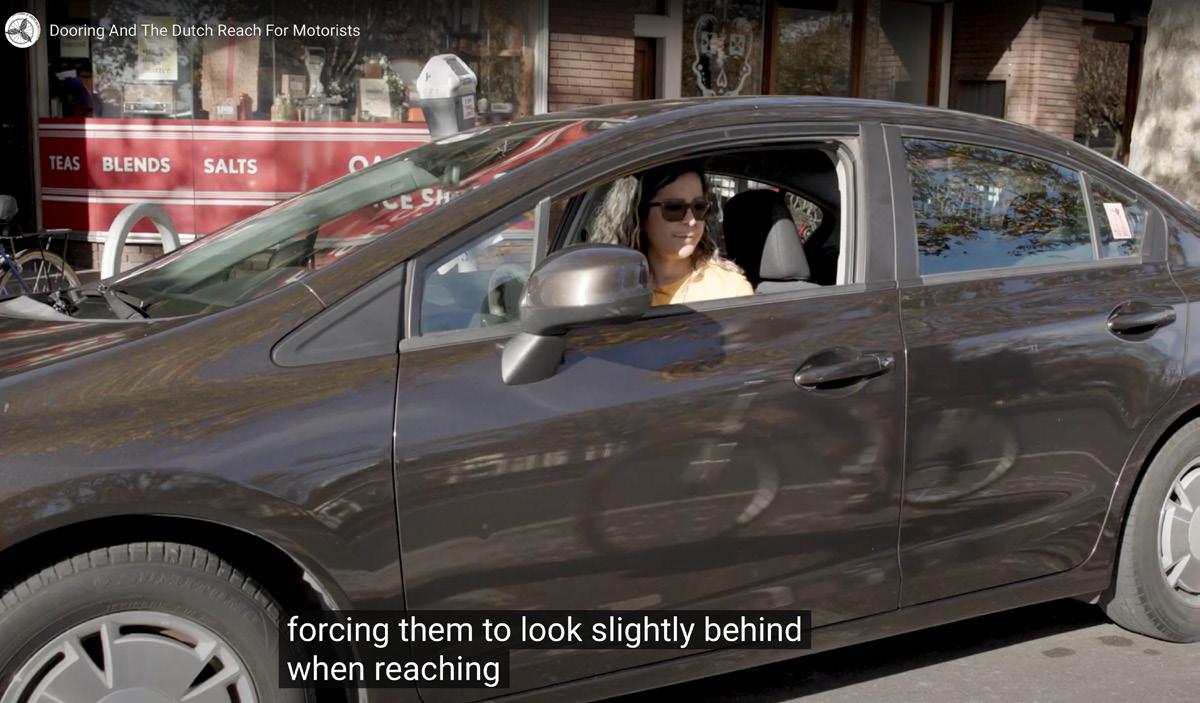
Sharing the road seems like an easy concept to grasp, so why are there so many drivers that don’t seem to get it? The League is making it easier for drivers to receive and share Bicycle Friendly Driver training by making it available online through our free learning center. Users can now easily access the training course consisting of ten short videos and a 20-question test. You can watch all the videos and take the test within 45 minutes or break it up into more manageable time chunks to fit your schedule, it’s up to you. While responsibly sharing the road isn’t rocket science, it is life-saving and should be treated as such. Knowing a few key concepts and things to be aware of when driving will help motorists understand how to protect the lives of bicyclists exercising their right to the road. Visit learn.bikeleague.org and share with your non-cycling friends.

35
SLOWING DOWN: IT’S NOT JUST FOR CARS
Everyone has something they do, besides bicycling, to slow down and enjoy the ride that is life. In this issue’s SAG Staff Wagon we asked the team, “How do you slow down and find joy?”
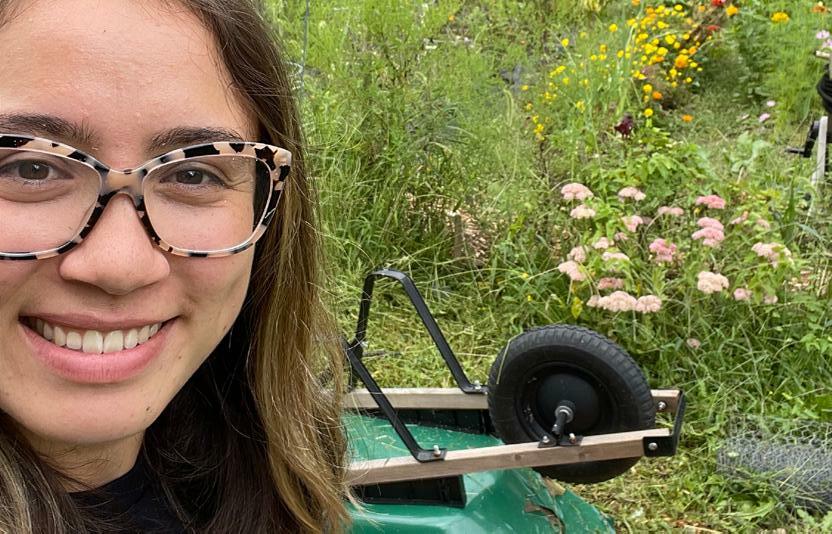

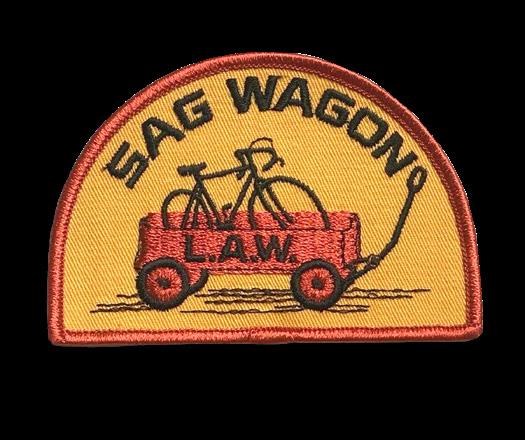

ANNA POD GARDENING
Generally, to slow down, I like to find a place and time where I can listen to podcasts and garden. Being able to be outside always helps me to focus, clear my mind and feel more connected to myself and the world. Gardening also makes me realize just how long it takes to grow food.

ALISON THE BUDDY SYSTEM
My dog, Roxy, and I share a daily morning walk. The fresh air and slow-paced movement helps me wake up with positivity. Roxy is always so happy to get out the door. Her happiness is contagious and always brightens my day.
LEAGUE SAG WAGON
36
CHOPPED AT HOME
One of my favorite ways to slow down is to give myself time and permission to get creative in the kitchen—collect a smattering of ingredients and then look up five or six different recipes for inspiration—and then just be inventive and see what happens.
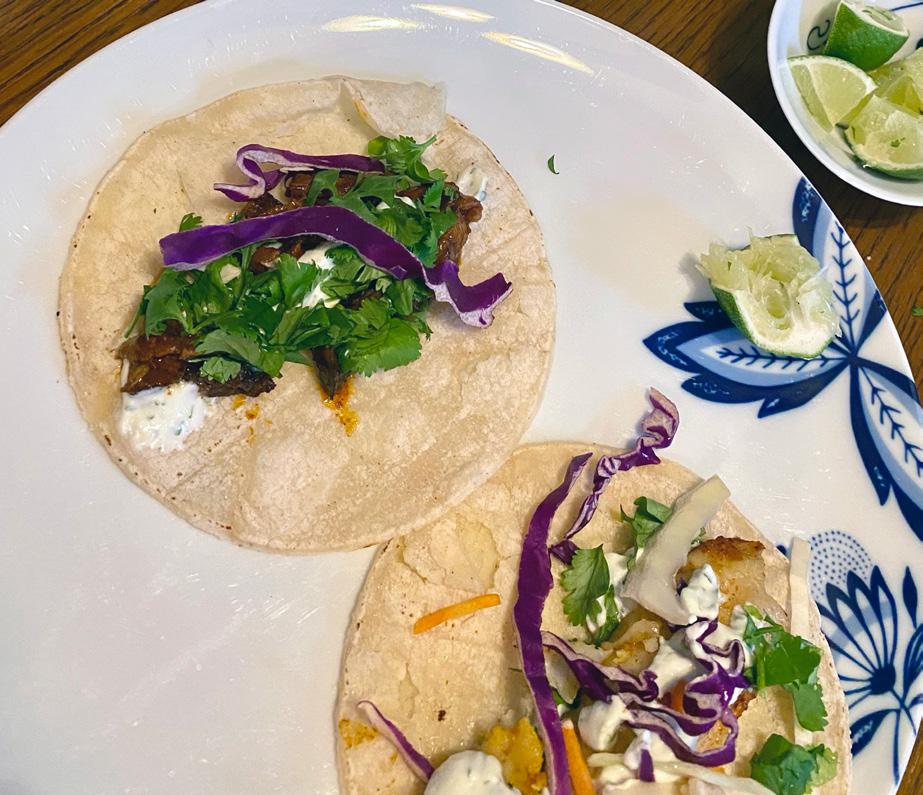
RAVEN LISTENING TO MUSIC ON VINYL RECORDS
Building up my vinyl collection has given me the peace of roaming around record stores—unplugged— looking for a new album to take home. There’s something about letting an entire album play from beginning to end without interruption that allows me to completely escape into the music.

RILEY READING THE ROOM
I started exploring tarot as a method of self reflection in early 2021. I’m fascinated with the universal lessons, concepts, and life events the cards represent and the varied ways they’ve been interpreted. I enjoy mixing and modifying cards pulled from numerous sources to construct my own one-of-a-kind, patchwork decks.
 AMELIA
AMELIA
37
DOG WATCHING
My husky Russy is of unknown age, adopted more than six years ago, and while huskies are known for being active, she is not. Watching her lay about, often with her tongue out, helps me slow down and appreciate my perpetual puppy who is unaware of life’s worries.
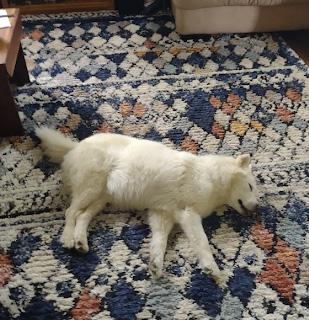
AUSTIN HELLO, KITTY
I like to stop and say hello to the cats that wander around on my street when I am walking around outside. Seeing them is a good reminder to slow down a bit and plus, the cats are super cute.


CARON MURDER, SHE READ
I like to slow down by reading stories I can get totally wrapped up in like murder mysteries, or other people’s adventures that are far from my daily life.
KEN
38
LAUREN GO WITH THE FLOW
Watercolor painting has been a great way to slow down and practice patience: you have to wait for the canvas to dry between layers. And, there is no room for perfectionism in watercolor: you have to learn to be comfortable with where the art form takes you.

KEVIN CHICKEN TENDERS
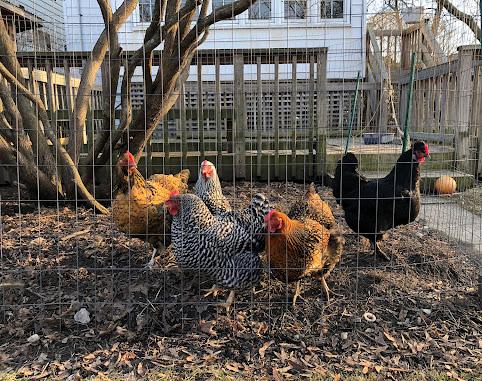
I built a coop for backyard chickens several years ago. It’s been home to five or six birds at a time ever since, providing my family with eggs and a connection to their many neighborhood admirers.
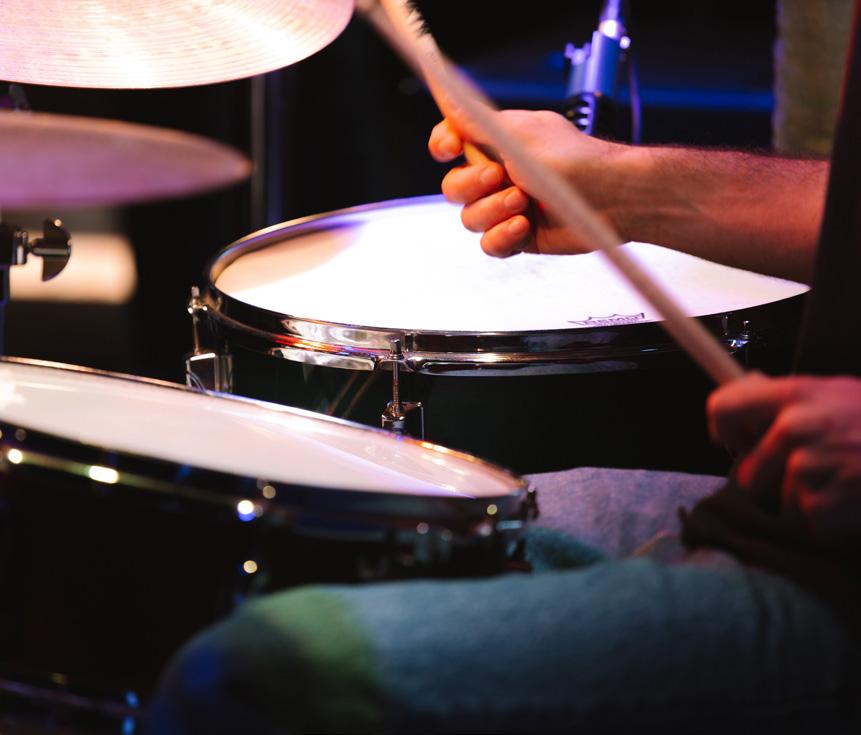
BILL AND THE BEAT GOES ON
I slow down in a lot of ways. Biking is a primary way, but playing drums and writing music opens up a different part of my brain which also cuts off the often noisy world of distraction. Like biking, it’s physical, too, which helps!
39
Photo by Lucía Garó on Unsplash
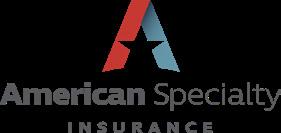














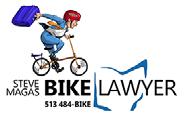




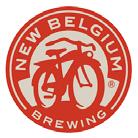



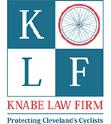



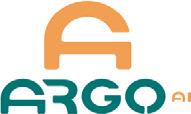


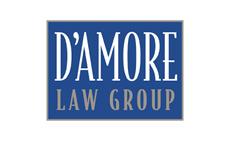






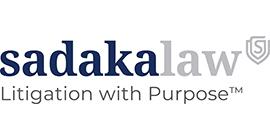
THANKS TO OUR 2022 CORPORATE
PELOTON LOCAL
SPONSORS CLIMBER
HERO BREAKAWAY SPRINTER ELITE
Kevin Dekkinga Director of Membership & Development
Alison Dewey Education Director
Lorna Green Operations Director Lauren Jenkins Communications Director Ken McLeod Policy Director
Ken
American
STAFF
Amelia Neptune
Bicycle Friendly America Director
Bill Nesper Executive Director
Alyssa Proudfoot Membership and Program Assistant
Anna Tang Bicycle Friendly America Program Specialist
BOARD OF DIRECTORS
Riley P. Titlebaum Advocacy and Outreach Assistant Raven Wells Communications Coordinator
Caron Whitaker Deputy Executive Director Austin Wu Safety Policy Specialist
Baross Max Hepp-Buchanan At Large Melissa Lee Ralph Monti Vivian
Cadesha
Sewell At Large Chuck Smith Torrance Strong At Large Karin Weisburgh At Large Anna
Podziba Chair Danielle Arigoni Vice Chair Kecia McCullough Secretary Maria Boustead Treasurer Jim
Ortiz
Prawl Mike
Zivarts
OUR MISSION is to lead the movement to create a Bicycle Friendly America for everyone. We envision a nation where everyone, whether they bike or not, recognizes and enjoys the many benefits and opportunities of bicycling and where everyone can experience the joy of bicycling.
Bicyclist magazine (ISSN 0747-0371) is published by the League of American Bicyclists, Inc. to help the organization achieve its mission to educate the public and promote awareness of bicycling issues. ©2022 League of American Bicyclists. Reproduction in whole or in part without permission is prohibited. Article queries should be addressed to communications@bikeleague.org. Your submission of manuscripts, photographs or artwork is your warranty that the material in no way infringes on the rights of others and that the material may be published without additional approval. Opinions expressed by writers are their own and do not necessarily reflect the policies of the League.
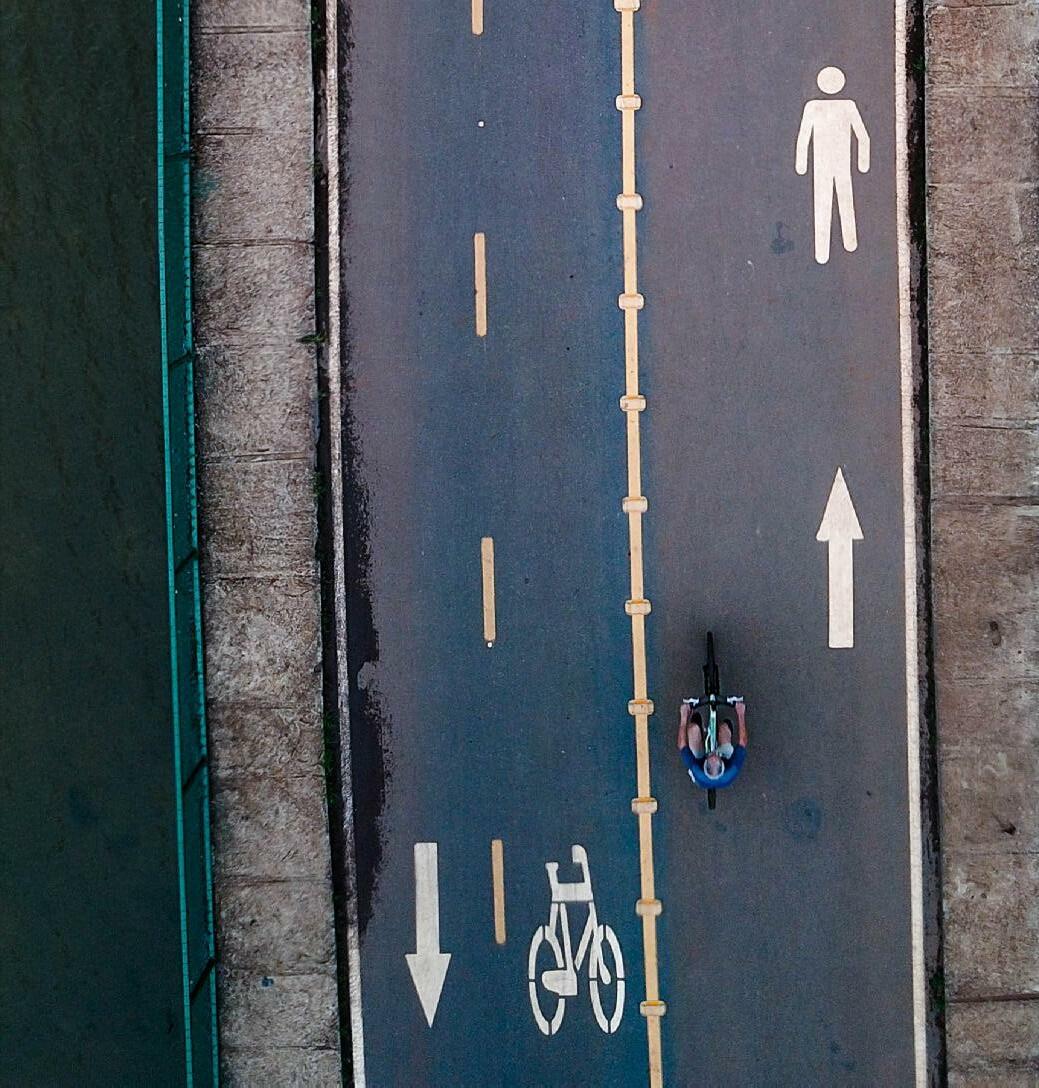
BICYCLISTS 1612 K Street NW, Suite 1102
20006 GIVE FOR BETTER BIKING
LEAGUE OF AMERICAN
Washington, D.C.















 BY LAUREN JENKINS
BY LAUREN JENKINS



 (EXCEPT THE MOST DANGEROUS
ONES)
(EXCEPT THE MOST DANGEROUS
ONES)
 BY AUSTIN WU
BY AUSTIN WU









 Sharrow outside door zone in Richmond, Virginia
Sharrow outside door zone in Richmond, Virginia















































 AMELIA
AMELIA











































